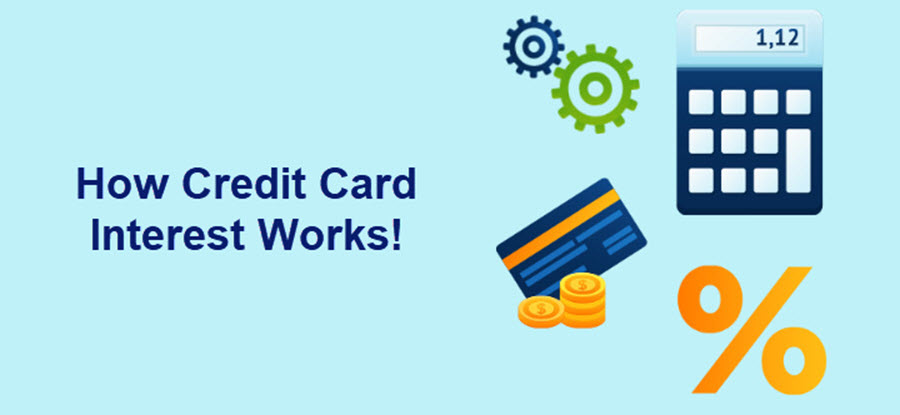Interest rates tell banks or lenders how much money they can charge consumers for loans on things like cars and first homes. In Australia, 74% of households hold debt, according to the Australian Bureau of Statistics, which means borrowers can expect to pay interest on more than just big-ticket items.
What is Credit Card Interest
Credit card interest can be boiled down to annual percentage rate, or APR. APR is simply the annual rate charged to you for borrowing money.
Some credit card companies and banks give you a grace period—that small sliver of time between when your billing cycle ends and when a minimum payment on your balance is due. You can pay off your balance in full without the penalty of interest. But if you don’t pay off your balance by the end of each grace period, that monthly balance carries over to the next month.
Bottom line: Interest is money that’s charged just for the act of borrowing.
APR applies monthly — not annually — to a credit card balance, so if you don’t pay off your credit card bill by the end of your billing cycle, interest will be tacked on since that money is still technically on loan to you.
What’s the Average Credit Card Interest Rate
The average credit card interest rate is 16.58%, according to Canstar. That’s no small amount. Depending on how much of a balance you carry on your account that could add up to . . . a lot. Even just $100 left unpaid each month could result in an extra $16 you owe by the end of the year.
In 2007, the average credit rate was 14.51%, according to Canstar, which means the interest rate is steadily increasing.
Of course, rates are set and maintained many different ways depending on the lender. So, if you have a credit card right now, the interest rate may be higher or lower than the average APR. Canstar lists the minimum as 8.99%, but it could be as high as 23.50%. If you hold credit card debt, expect your interest rate to tick up over time.
How to Calculate Credit Card Interest
To see how this really works, it’s time to dust off that old algebra textbook, sharpen those pencils, and do a little math. No, you don’t have to be an accountant to do these calculations, but beware — division and multiplication lie ahead!
1. Identify your APR.
For the sake of simplicity, let’s begin by knocking that average credit card APR down to just 15% and convert it to a decimal: 0.15. See? We’re going easy on you.
2. Convert APR to a daily interest rate.
Next, we’re going to divide that number by 365—the number of days in a year. So, 0.15 divided by 365 is 0.00041096. That’s a pretty small number! But unfortunately, it’s not the one we’re looking for. That number represents the daily interest rate.
3. Determine your account balance.
For the purposes of this example, you just purchased a new living room set on credit and paid $2,100. That’s your account balance. Easy enough.
4. Calculate how much you’re paying in dollars.
Lastly, we’re going to take the daily interest rate you figured out in step two and multiply that number by the account balance. Now, you have the amount of interest—in dollars—your account will increase by in one single day, month and year:
• $2,100 multiplied by 0.00041096 equals 86 cents for each day.
• Over the course of a 30-day month, that number adds up to $26.75.
• And throughout the course of a year due to compounding interest, it balloons to about $432.66.
When the math is broken down like this, we see exactly how much your interest is costing you in dollars and not percentage points—and not just annually, but monthly, which is where those billing cycles will hit you where it hurts.
Don’t be deceived by that final number, though. The amount of interest can range widely depending on annual fees, late payments, etc. Also, keep in mind that if you stop making payments for any reason at all, that interest each month adds up to a larger account balance, which means more interest—and the vicious cycle continues . . .
How to Avoid Credit Card Interest
Now that you’re equipped with the knowledge of what credit card interest is and how it works, you’re probably wondering what’s the best way to avoid interest, or even better—ditch it for good. Here’s the deal: You want to minimise interest on anything because that’s money you’re forking over for the “privilege” of borrowing. Ideally, its better to save up cash to pay for things, instead of borrowing money.
If you have already taken on finance for that new couch, home entertainment system or set of wheels, you can pay it down quicker using the very popular debt snowball method. And the good news is, the debt snowball involves very little math and is simple to implement.
Here’s How it Works:
Step 1: List your debts smallest to largest, regardless of interest rate. Pay minimum payments on everything but the smallest debt.
Step 2: Attack the smallest debt with a vengeance by putting any money you can squeeze out of your budget toward that debt. Once it’s gone, take that payment and the extra money, and apply it to the second-smallest debt while continuing to make minimum payments on the rest.
Step 3: Once that debt is gone, take its payment, and apply it to the next-smallest debt. The more you pay off, the more your freed-up money grows and gets thrown onto the next debt—like a snowball rolling downhill.
The debt snowball method works because the person doing it gains momentum as they go, feeling motivated once they pay off the smallest debt and so on. The faster you work on your debt snowball, the sooner those credit card payments—and that interest—will stop cramping your monthly budget.
More from Budgeting
Tackle Debt with the Right Solution!
Everyones debt is different, get proven relief strategies to determine what is right for you.
Tell us about your debt

See what you could save

Take control of debt






